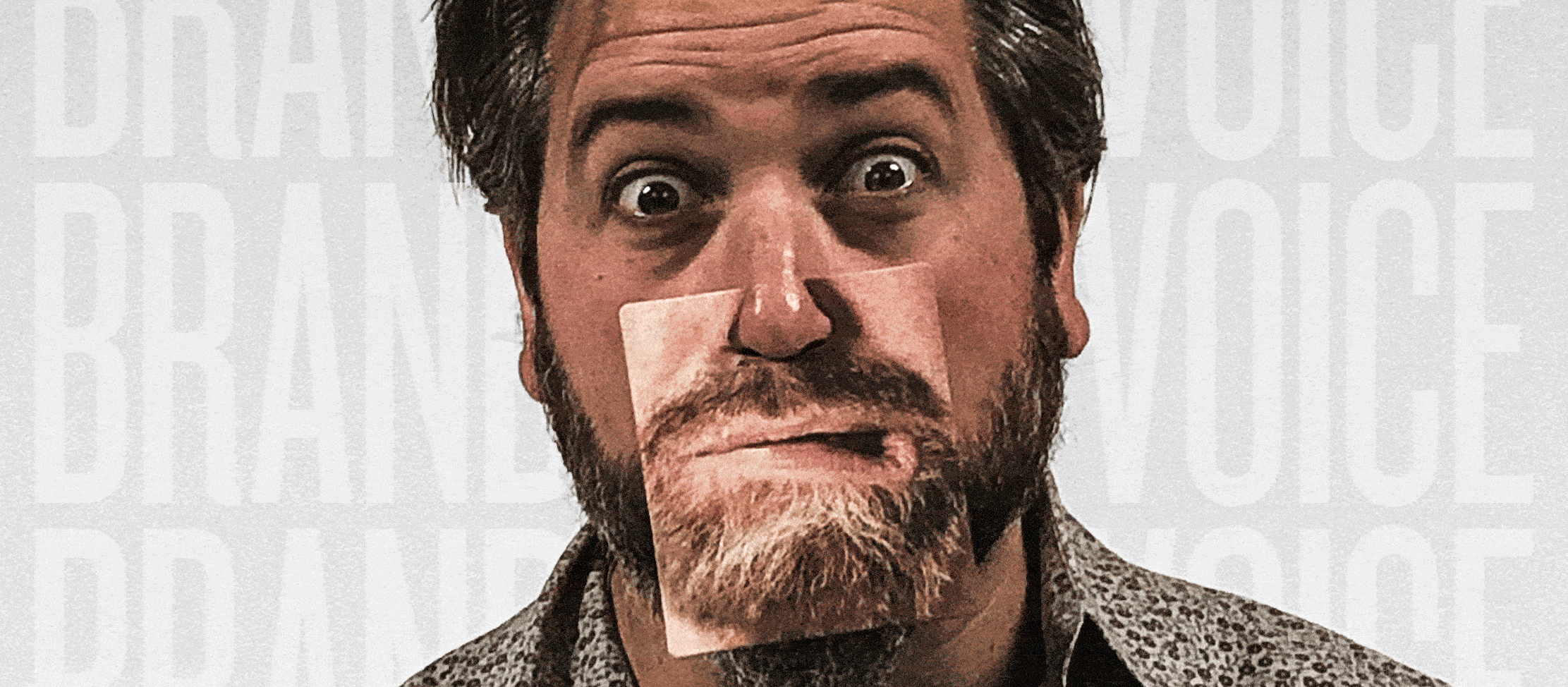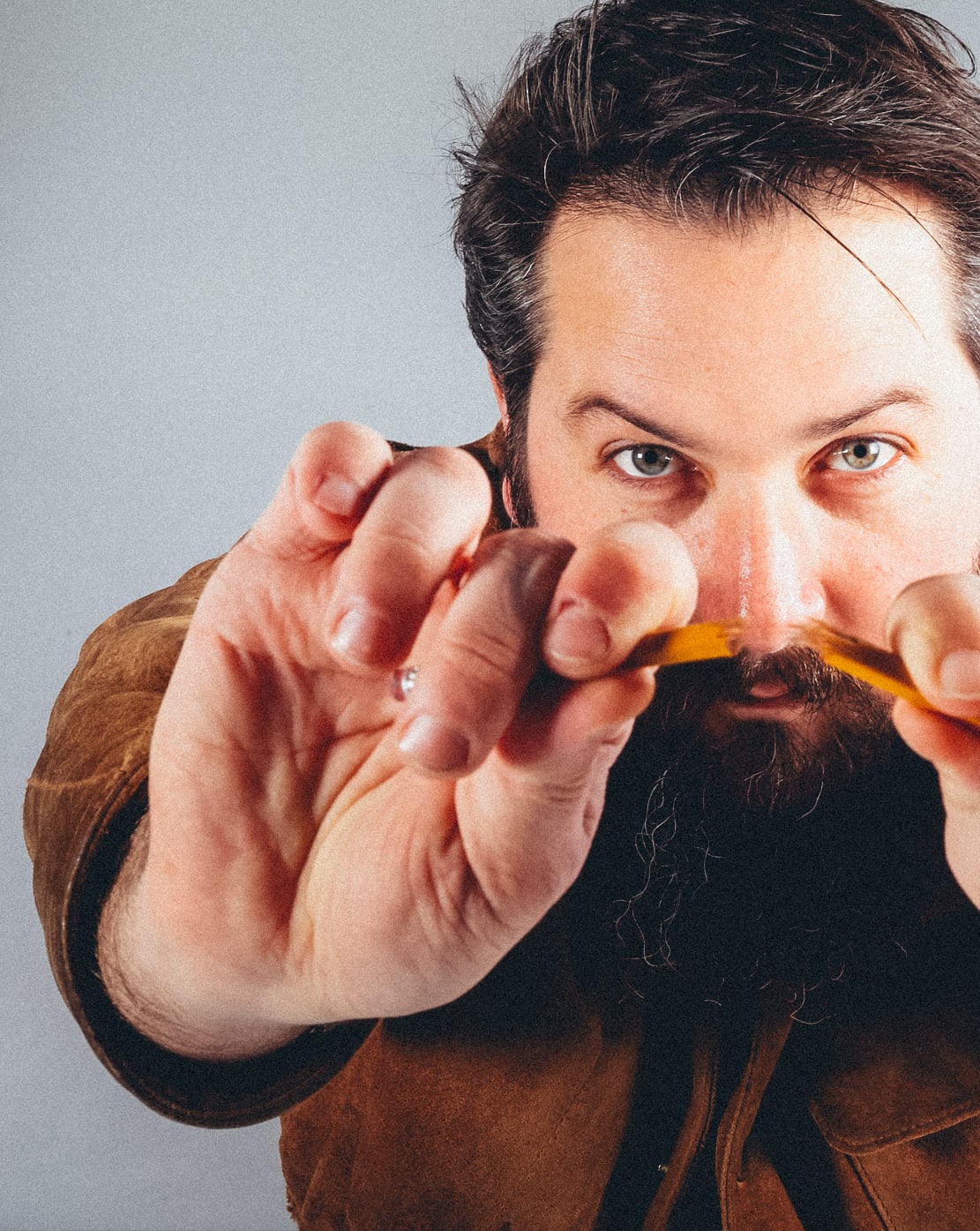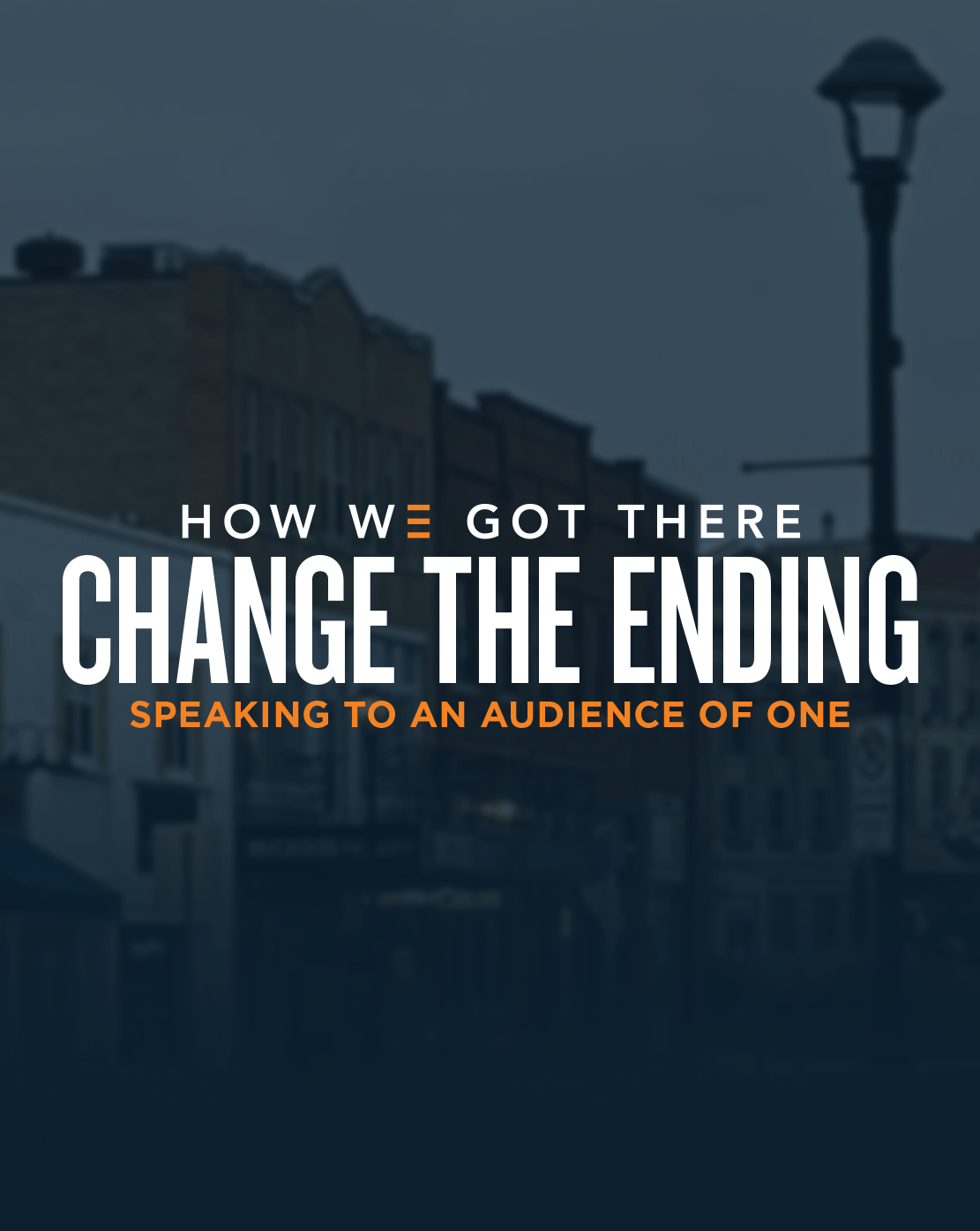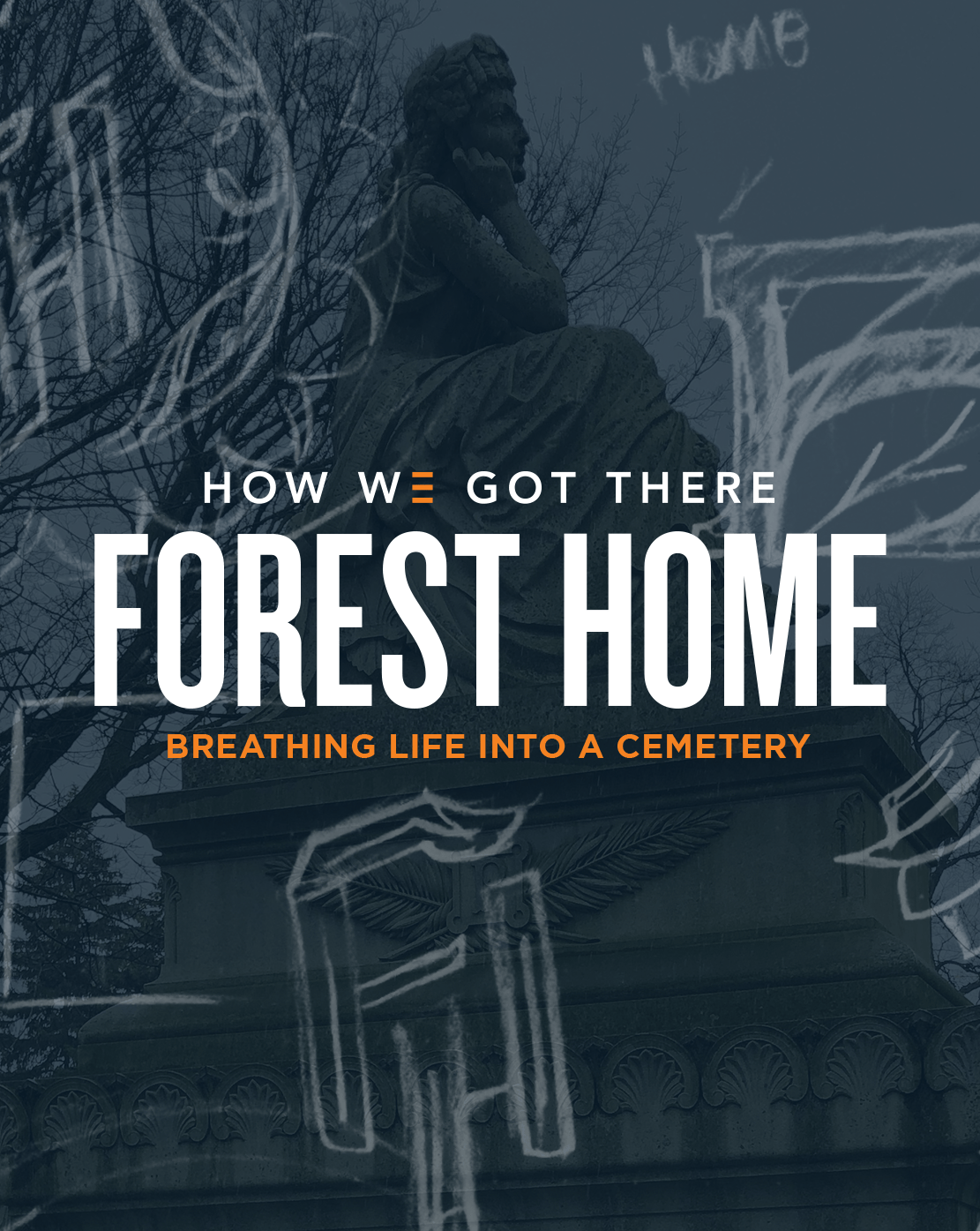
He Sells, She Sells: Building Brands That Soar
Exercising your brand voice
Editor’s Note: When you are talking brand voice, it’s not just what you say, but HOW you say it … so we thought it might make sense for you to actually HEAR what Dan has to say about brand voice in his own words. For you literary types, the narrative follows.
There are three individuals sitting at a bar. It’s well furnished with a Chicago-salvaged mid-century look. The wood-framed mirror doubles the hundreds of glistening bottles of whiskeys, bourbons, and assorted aperitifs (and the obligatory bottle of Dr. McGillicuddys Peppermint Schnapps). It’s a good bar, devoid of two-dollar-tap-Tuesday promotions and the like. Hemingway would drink here. The bartender has a well-manicured beard. Neatly dressed. You know the type. He probably makes his own bitters and has a strong opinion about the ingredients and proportions for a proper Manhattan. He attends to each of the patrons and asks what they’d like to drink.
They order as follows:
“Je ne sais pas. Je ne parle pas anglais. Vodka Martini? Comment dit-on…olives?”
“Hows ’bout a belt of that Four Roses? Ah’ve got a meeting in an hour, but ah’just got off the plane ‘n’—sonuvabitch—ah could use some ee-ven-ing out!”
“Two-hearted. Thanks.”
Putting a face to a drink order
At this point, I should probably point out this isn’t a joke—it’s an exercise. You’ve got the bar, you’ve got the bartender, you’ve got the patrons and their respective orders. Close your eyes. Tell me about the three patrons based purely on what they said.
For my part, the first fella—Frenchy—is wearing a two-piece, dark suit, no tie, open collar, and a shiny pair of smart shoes. Light blue or white shirt. He’s in his early forties, hair slicked back, kinda pale complexion. He has sleepy eyes … he’s traveling. Maybe here on business. An overnighter. And what-the-hell-why-not, he’s got a mole on his right cheek.
Foghorn Leghorn in the middle is heavy-set. He looks like The Big Lebowski—not Jeff Bridges, the REAL Jeffrey Lebowski, David Huddleston. Mouth like a catfish. He’s got a suit and tie on. Glasses. Childhood acne scars or he’s just bad at shaving. He’s C-suite. He’s some kinda businessman; probably from Tyson or Boar’s Head. He sells meat.
The last person is mostly forgettable. A regular guy; maybe a “bro” on the weekend with his buddies (as in “Dude! Beer me that beer, bro!”). Button-down shirt, slacks, mid-to-late-thirties. A well-curated five o’clock shadow. Probably working at his Dad’s concrete company. But he’s hunched over. No animation. Bad day? Maybe something didn’t go his way. He’s obviously feeling quiet today.
Let’s say Alan Cumming, John Goodman, and Josh Duhamel (the poor man’s Timothy Olyphant).
With nothing more than a single line of dialogue, we’ve cobbled together a distinct brand for each of these characters. Remarkably, we’ve done a lot with very little. And in essence, this is the power of brand voice.
The foundation of a brand’s impression and actions
Totally self-aware here … I know I’ve taken the needlessly long way around to set up a blog about brand voice. But I’m a big fan of the scenic route.
There are a thousand definitions for brand voice (Google returned 86.7 million results for “brand voice definition” in 0.5 seconds). As a place to start, here’s ours:
Brand Voice is the written word—read or spoken—crafted so expertly that it vividly inspires the senses.
It contributes to brand personality and essence, and it informs visuals, brand identity, and graphic standards. Which is to say, it’s at the core of your brand. And perhaps most importantly, it’s one of the key components that makes your brand relatable. (Note: not necessarily likable, but relatable.)
There are two component parts to achieving a resonant brand voice: crafting it and activating it. What do you say we take a look at them?
Crafting your brand voice
The textbook method for developing a brand voice is to turn to the page in your brand book that details your organization’s personality. (Does everyone have their brand book handy?) It’s probably a list of 6-8 words, perhaps a few sentences about what each of them means. (If you don’t have a brand book, please reach out to Gail at EPIC; she’ll be happy to get you started.)
Now imagine a PERSON with those six to eight qualities. What this imaginary individual looks like isn’t nearly as significant as what they sound like. Are they soft-spoken or authoritative? Are their sentences short and pinched, or are they long and drawn out and devoid of any real periods? Do they have an accent or dialect? Are they young and exuberant? Or old, wise, and educated? It’s a fun exercise to be sure, but this exercise also requires a Professor-Henry-Higgins-level of thoroughness. Diligently determining answers to these questions and others like them will help inform your brand voice.
If character development isn’t your thing, there’s another way out. Sometimes in writing for a brand, it’s easier to hear the voice first; easier to imagine the isms and nuances of the character that is your brand. Perhaps the most efficient way to find your footing is to look to the silver screen. With such an array of exaggerated characters and personalities, there’s no shortage of roles closely aligned to your brand. Borrowing from their cadence and tenor, imagine your mission statement or brand position delivered in their voice. Your budget may not be able to support McConaughey rehashing Wooderson, but that shouldn’t stop you from channeling his spirit and voice.
There are pitfalls here to be wary of; it’s easy to fall into tired cliches … characters like Morgan Freeman and Sam Elliot. This exercise requires something unique to your brand so dig deep, like, supporting-cast-of-a-Coen-Brothers-movie deep.
Whichever route you choose, keep these things in mind:
Annunciation + diction
Is every syllable significant, delivered with the staccato sound of slowly cracking glass? Or is the delivery casual—maybe even lazy—slipping on consonants and running words together? What about mannerisms? Does your brand end every sentence with “right?” or “y’know?”
Emphasis
Where and how does your brand voice establish emphasis? Does it make its point up front? Or does it speak in idioms and analogies to make their point? Does your voice yell? Or does it speak softly, with significance, and carry a big stick?
Mood + tone
Does your voice embrace brevity, using as few words as possible? Or does it speak fluidly, poetically? Is perfect grammar important, or s’it alright t’trip over uh few words here’n’there?
Feelings, sentiments + motions
What does your brand/voice stand for? When does it speak up? And how? What is your brand passionate AND vocal about?
Activating it
Alright, so you’ve defined your brand voice. You’re going with the quiet intensity and severity of Chazz Palminteri’s Sonny from a Bronx Tale. Bold move, but now what?
Activating your brand voice requires two things: consistency and honesty. Easier said than done, right?
Consistency demands vigilance. A mechanism to monitor content so that every spot, every post, every read feels as though it came from the same author and in the same voice. Afterall, slipping in and out of an accent barely works for Elisabeth Olsen (c’mon! Is Wanda Maximoff Slovakian or not?!) It’s easy to wave off seemingly small stuff like a rack card or white paper, but those small things can make a big difference in interrupting an otherwise flawlessly executed brand voice. Just look at the mega-brands like Coke, or McDonalds or Pabst; every touch point is impressively consistent.
Honesty is a challenge. Not just in the sense of speaking truth, but in how honestly and authentically your brand voice speaks for your organization.
For example, some time back our team poured through dozens of online forums and chat rooms dedicated to the lawn and landscape industry. We waded through thousands of posts, reading all of them with the sole purpose of learning how our audience speaks. As you can imagine, the language was colorful … but more importantly, we discovered the industry had its own unique vernacular. It left us with a conundrum: do we speak in an authentic voice? Knowing that it might require the occasional PG13-level profanity and terse language and, as such, upset a customer or two? Or do we play it safe?
Ultimately we opted for authenticity—and the angry emails came. (Having used the phrases “to hell with…” and “the devil is in the details” in body copy, one critic implied we were a band of Satanists.) But that dedication to authenticity paid off and most certainly helped us better connect with our audience than any other brand in market.
The best test for brand voice is to ask these two simple questions: “Would our brand really say this?” and “Would our brand really say it this way?” Answer the questions honestly—with brutal and judicious honesty—and you’re on your way to creating an impactful and resonate brand voice.
Final thoughts here. This isn’t a checklist situation, and this meandering blog doesn’t do justice to the months and sometimes years it takes to refine and perfect a brand voice. But it’s fun work, and intensely gratifying when done right. Good luck, and by all means, holler if we can help.
Recommended







